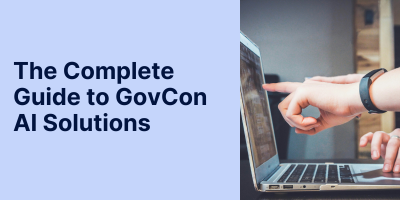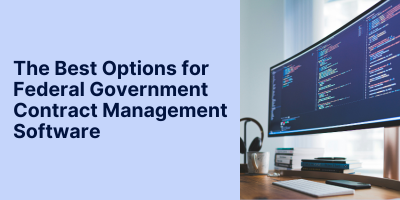File Management in the Age of AI
As a former Proposal Writer, I have worked for companies that have deep experience in proposal development and submission as well as those looking to wade into the proposal development waters as another channel of business development. In the latter case, I was so excited when we finally had resumes formatted consistently, a folder of Past Performance summaries, and various case studies that captured the tailored solutions we provided clients. With these files and folders at my fingertips, it was just a matter of drawing from them to tailor our submissions, win, and then upload those winning submissions to draw from in the future. And with generative AI in my toolbox, it became even faster to tap into this data for responses.
Or so I thought. Because, of course, there was the inevitable staff turn over. Resumes were not updated. Past performance summaries and case studies became more numerous but also older and less relevant for new submissions. The files and folders stayed put or were updated only intermittently. Of course you could only see this at a glance if the file names included dates or the document type. Not only did the sheer volume of data mean generative AI was a less effective assistant as its capabilities were now more thinly spread over all these files. It also meant more time editing and reviewing information to be sure it was still correct and relevant.
Proposal writers are not the only ones who feel the crush of digital clutter. A 2023 study from Adobe Acrobat found nearly 3 out of 4 employees felt their work was impeded by poor digital organization. More than one in ten spent 4 hours or more weekly searching for digital documents. Nearly half of those surveyed said outdated or irrelevant documents peppered their company’s digital workspace, challenging their ability to locate the document they needed quickly and easily. These statistics just scratch the surface of why a robust file management system matters. Additionally, these systems are critical to ensuring regulatory compliance, bolstering collaboration, enhancing security, and securing proprietary information.
Effective file management is thus of paramount importance, and a responsibility that ultimately needs to become a habit integrated into the workflow of every employee across your organization. And with generative AI a powerful tool more widely available and utilized than ever before, there has never been a better time to adopt a comprehensive file management approach optimized to work with AI.
Here are some best practices organizations and their teams can implement to build and maintain more relevant information, resources, and data in the age of AI. In particular, they highlight specific actions proposal writers, managers, and their teams can take to deliver quality, winning proposals more efficiently.
For Individuals
To succeed in wrangling your organization’s files, it is imperative you get buy-in from every member of staff as, with every file uploaded or document created, they are laying the groundwork for sustainable success overall.
File Naming and Organization
- AI-Optimized Naming Conventions
- Use descriptive names with standardized elements, including dates: [Client]_[ProjectType]_[DocSection]_[YYYYMMDD]_[Version]
- Include searchable keywords that AI and any employee can easily recognize (e.g., "Past Performance" rather than "PP")
- Avoid special characters that may confuse AI as it extracts information. Instead stick to letters, numbers, hyphens, and underscores.
- Folder Architecture
- Create logical hierarchies (by client, by proposal stage, by document type) that AI and employees can easily navigate
- Maintain a "Prompt Library" folder with effective AI prompts categorized by proposal section type
- Organize reference materials in logically named folders that AI can easily locate when asked
- Metadata Enhancement
- Add comprehensive document properties (title, subject, tags, categories) to improve AI searchability
- Create summary text files alongside complex documents to aid AI understanding
- Tag files with relevant identifiers (client names, contract vehicles, solution types) that AI can reference
Content Management
- AI-Ready Content Development
- Segment reusable content into chunks that AI can easily combine
- Store successful AI-generated content with the prompts that created them for future reference
- Maintain clean, well-formatted source documents as these help minimize AI misinterpretation
- Version Control
- Use clear version indicators in filenames that AI can understand (v01, v02)
- Keep a version history log in a structured format that AI can read and summarize
- Retain key milestone versions rather than every incremental change
- Personal Knowledge Management
- Create an "AI Research Assistant" folder with topic-specific research materials
- Maintain structured notes on client preferences for easy AI reference
- Document successful AI workflows as templates for future proposal tasks
For Teams
Next you will want to get your teams synergized around file management, including in terms of structuring systems and knowledge management.
Collaborative File Systems
- Shared Repository Structure
- Design folder hierarchies that mirror proposal development workflows
- Establish dedicated spaces for AI-generated content vs. human-authored content
- Create clearly labeled folders for approved boilerplate language that AI can access
- Access Control with AI Considerations
- Implement permission structures that allow AI tools appropriate access levels
- Create "AI-accessible" zones where sensitive information has been properly redacted
- Establish clear guidelines for what content types can be processed by AI
- Collaborative Workflows
- Define standard locations for works-in-progress vs. final approved documents
- Create structured handoff points between team members that AI can help coordinate
- Implement naming conventions that clarify ownership and status (e.g., [Section]_[Owner]_[Status])
Team Knowledge Management
- AI-Enhanced Libraries
- Maintain a team "Content Library" with categorized, AI-searchable proposal sections
- Create a "Lessons Learned" repository in a structured format AI can analyze
- Develop a shared prompt library with proven effective instructions for proposal sections
- Quality Control Systems
- Establish review folders with standardized feedback templates AI can analyze
- Implement checklist documents in a format AI can use to verify compliance
- Create comparison folders for tracking changes between versions
- Training and Templates
- Maintain an up-to-date collection of proposal templates optimized for AI use
- Create example files demonstrating proper organization and naming conventions
- Develop training materials on effective AI-human collaboration for file management
For the Organization
Individual and team efforts to improve file management will be impossible to sustain unless, at the enterprise level, you have the file architecture, policies, and training to underpin their work and stay current on best practices as AI capabilities continue to evolve.
Enterprise File Architecture
- Centralized Knowledge Repository
- Implement a master file architecture designed for AI-powered discovery and analysis
- Create distinct knowledge domains with consistent organizational patterns
- Establish clear boundaries between proposal content types (technical, management, past performance)
- Metadata Standards and Taxonomies
- Develop organization-wide taxonomies and standardized words/phrases for AI consistency
- Implement standardized metadata schemas across all proposal documents
- Create classification systems that enable AI to quickly identify relevant content types
- Integration with Information Systems
- Connect file repositories with Customer Relationship Management (CRM) platforms and opportunity tracking systems for contextual AI access
- Implement search systems that leverage AI's natural language understanding
- Establish a feedback loop where successful strategies, insights, and data from project execution are fed back into the proposal process to improve future proposals
Governance and Compliance
- AI-Ready Governance Policies
- Establish clear guidelines for what information can be processed by AI tools
- Create data classification systems that guide appropriate AI use cases
- Implement audit trails for AI-assisted file access and modification
- Security Protocols
- Develop secure storage zones with varying AI access permissions
- Implement watermarking or tracking of AI-processed sensitive information
- Create clear protocols for sanitizing proprietary information before AI processing
- Compliance Management
- Maintain libraries of compliance requirements in AI-readable formats
- Create verification workflows that ensure AI-generated content meets standards
- Implement retention policies that AI can help manage and enforce
Strategic File Management
- Enterprise Search Optimization
- Implement AI-powered search capabilities across organizational repositories
- Create standardized search patterns for common proposal content needs
- Develop guided search workflows for new team members
- Analytics and Improvement
- Use AI to analyze file access patterns and identify optimization opportunities
- Implement systems to track content reuse and effectiveness
- Create feedback loops to improve file organization based on AI-identified patterns
- Training and Support
- Develop comprehensive onboarding on file management with AI integration
- Create self-service AI assistants that help staff navigate complex file structures
- Implement regular training updates as AI capabilities evolve
So, how do you get started implementing these best practices or improve file management approaches already working for you?
- Use a Staged Approach
- Start with individual practices, then team adoption, then organizational standards
- Begin with high-value content areas before expanding to comprehensive coverage
- Implement basic naming conventions before advancing to complex metadata systems
- Keep the User at the Center of the Design
- Involve proposal teams in designing AI-friendly systems that match workflows
- Create intuitive structures that don't rely solely on AI to navigate
- Balance AI optimization with human usability
- Strive for Continuous Improvement
- Schedule regular reviews of AI effectiveness in finding and using content
- Maintain a centralized repository of file management best practices
- Adapt systems as AI capabilities evolve and new tools become available
- Don’t Forget to Measure
- Consider metrics as you design your approach and be sure you can gather data that measures what you want to know
- Track time saved through improved file retrieval
- Measure content reuse rates and proposal quality improvements
- Monitor AI accuracy in finding and recommending appropriate content
Your organization was not built overnight. Nor is a winning proposal or business development team. A file management system optimized for the age of AI won’t be either. In addition to these best practices and an incremental approach to implementation, tools such as Awarded.AI can streamline your path to success by, for example, capturing that series of prompts that generated successful content, tracking opportunities your team is pursuing in one place, and keeping your team members up to date on how to leverage the latest advances in generative AI, all while offering a centralized place to store or integrate your files securely.


%20(1)%20(1).png?width=1440&height=711&name=PSciAI-Save-time.-Deliver-faster.-Win-More-(Black)%20(1)%20(1).png)




%20(1200%20x%20600%20px).png)

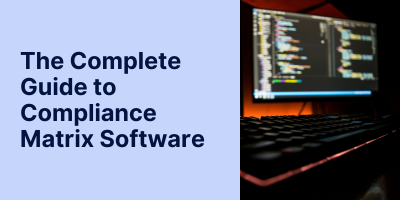
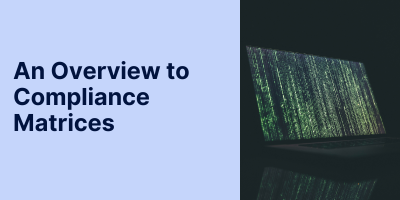

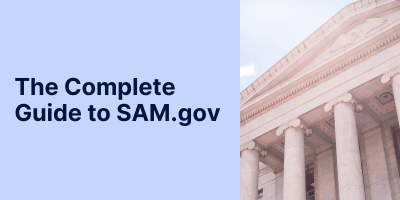
-2.png)
-2.png)
